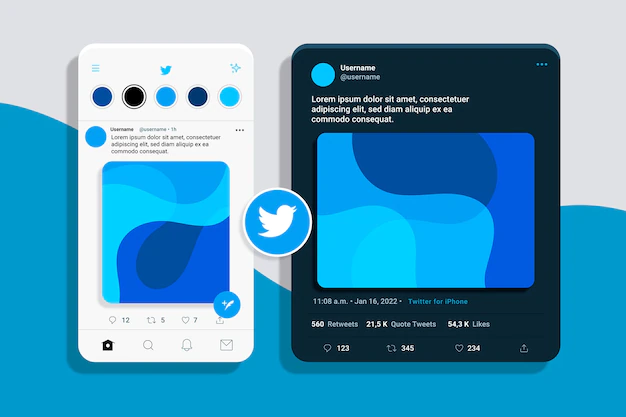When it comes to web design, typography is often overlooked, but it is an essential element of the design process. Typography refers to the selection of fonts, their sizes, spacing, and arrangement on a website. In McKinney, businesses that understand the role of typography in web design can create a website that is not only visually appealing but also easy to read and navigate. In this blog, we will discuss the importance of typography in web design for McKinney businesses.
Typography Sets the Tone for Your McKinney Business
Typography is the first thing that visitors see when they land on your website. The fonts and styles you use can create a visual identity for your business and set the tone for your brand. For example, a law firm may choose a classic serif font to convey a sense of professionalism and reliability, while a fashion brand may opt for a bold and playful sans-serif font to show its creativity and individuality. In McKinney, businesses can use typography to communicate their brand’s personality and values to their audience.
Typography Affects Readability and Legibility
The primary purpose of a website is to provide information to its visitors. Therefore, the typography you choose must be readable and legible. The choice of font size, spacing, and line height affects the readability of your website. If the font is too small or the spacing is too tight, visitors may find it difficult to read. On the other hand, if the font is too large or the spacing is too wide, it may look unprofessional. In McKinney, businesses must choose typography that is easy to read and legible to their audience.
Typography Helps to Establish Hierarchy
When designing a website, it is essential to establish a hierarchy of information to guide visitors through the content. Typography can play a significant role in establishing this hierarchy. By using different font sizes, weights, and styles, you can highlight important information and guide visitors through the content. For example, the headline of an article may be in a larger, bolder font than the body text to attract attention and establish hierarchy. In McKinney, businesses can use typography to organize their content and make it easier for visitors to find the information they need.
Typography Enhances Visual Appeal
Typography can add visual appeal to a website and make it more attractive to visitors. The right font choices and styles can create a visual harmony that appeals to the eye. For example, a website may use a serif font for the headlines and a sans-serif font for the body text to create contrast and visual interest. In McKinney, businesses can use typography to create a visually appealing website that engages visitors and encourages them to stay on the site longer.
Typography Improves User Experience
User experience is an essential aspect of web design. The typography you choose can significantly impact the user experience of your website. A website with easy-to-read fonts, clear spacing, and a logical hierarchy of information can make it easier for visitors to navigate and find the information they need. In McKinney, businesses that prioritize typography in their web design can create a website that provides an excellent user experience to their audience.
Now that we have discussed the importance of typography in web design for McKinney businesses, let’s explore some best practices that can help you choose the right typography for your website.
Choose Readable Fonts
When selecting fonts for your website, make sure they are easy to read. Avoid using overly decorative or ornate fonts that may look impressive but are difficult to read. Sans-serif fonts like Arial, Helvetica, and Verdana are excellent choices for body text as they are easy to read on screen. Serif fonts like Times New Roman and Georgia are also suitable for body text but are better suited for printed materials.
Use a Limited Number of Fonts
Using too many fonts can make your website look cluttered and confusing. Limit the number of fonts you use to no more than three. Choose one font for headlines, another for body text, and a third for emphasis, such as bold or italic. Using a limited number of fonts can create a cohesive look for your website and make it easier to read.
Establish a Hierarchy with Font Size and Style
As mentioned earlier, typography can help establish a hierarchy on your website. Use larger font sizes for headlines and smaller font sizes for body text. You can also use different font styles, such as bold or italic, to highlight important information. By establishing a hierarchy with font size and style, you can guide visitors through your content and make it easier to read.
Consider Contrast
Contrast is an essential aspect of typography. Choosing colours that contrast well can make your text easier to read. For example, black text on a white background is easy to read because of the high contrast. However, using light grey text on a white background can be difficult to read as there is not enough contrast. Make sure your font colour and background colour contrast well to ensure readability.
Pay Attention to Spacing
Spacing is an important consideration when it comes to typography. Make sure there is enough space between letters, words, and lines of text. Too much spacing can make your text look disjointed, while too little spacing can make it difficult to read. Pay attention to spacing when selecting fonts and make sure they are well-spaced for optimal readability.
Final Thoughts
In conclusion, typography plays a vital role in web design for McKinney businesses. It sets the tone for your brand, affects the readability and legibility of your website, establishes hierarchy, enhances visual appeal, and improves the user experience. By following best practices such as choosing readable fonts, using a limited number of fonts, establishing a hierarchy with font size and style, considering contrast, and paying attention to spacing, you can create a website that is visually appealing and easy to read and navigate. In McKinney, businesses that prioritize typography in their web design can create a website that represents their brand’s personality and values and engages their audience.






